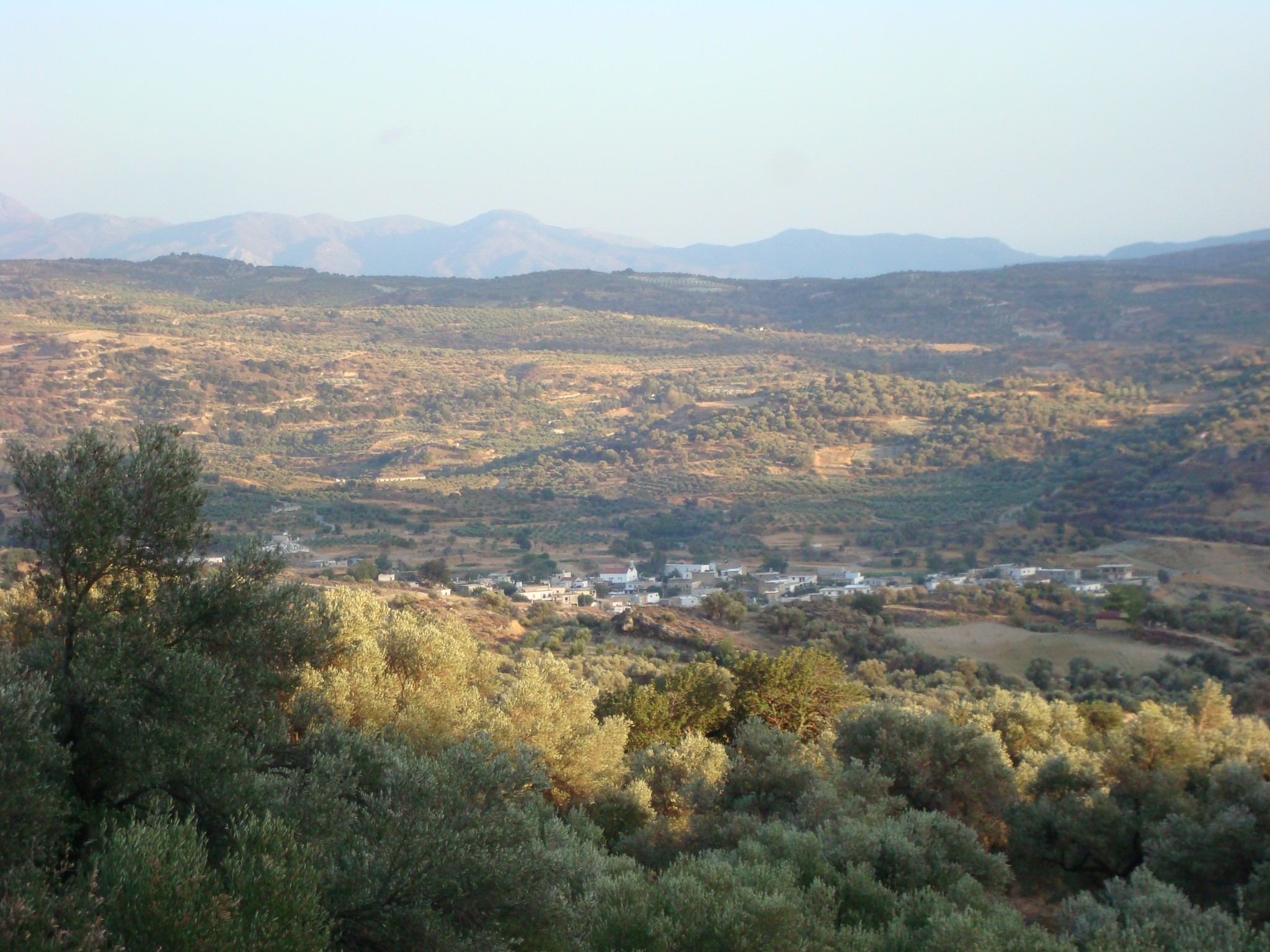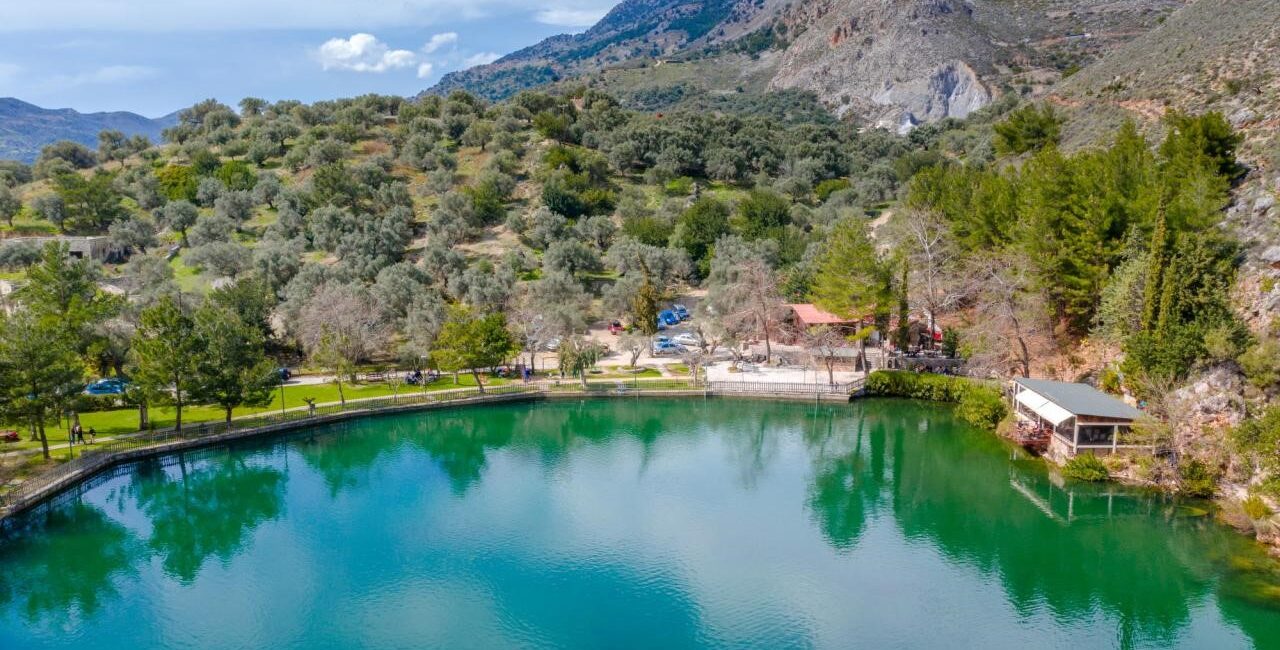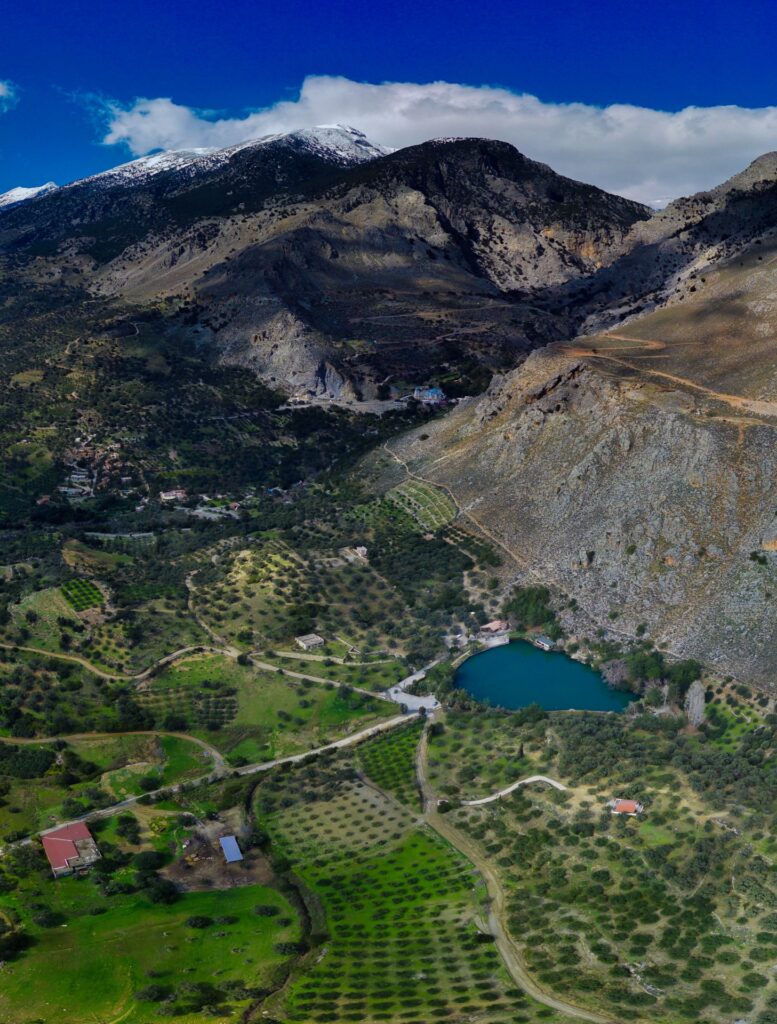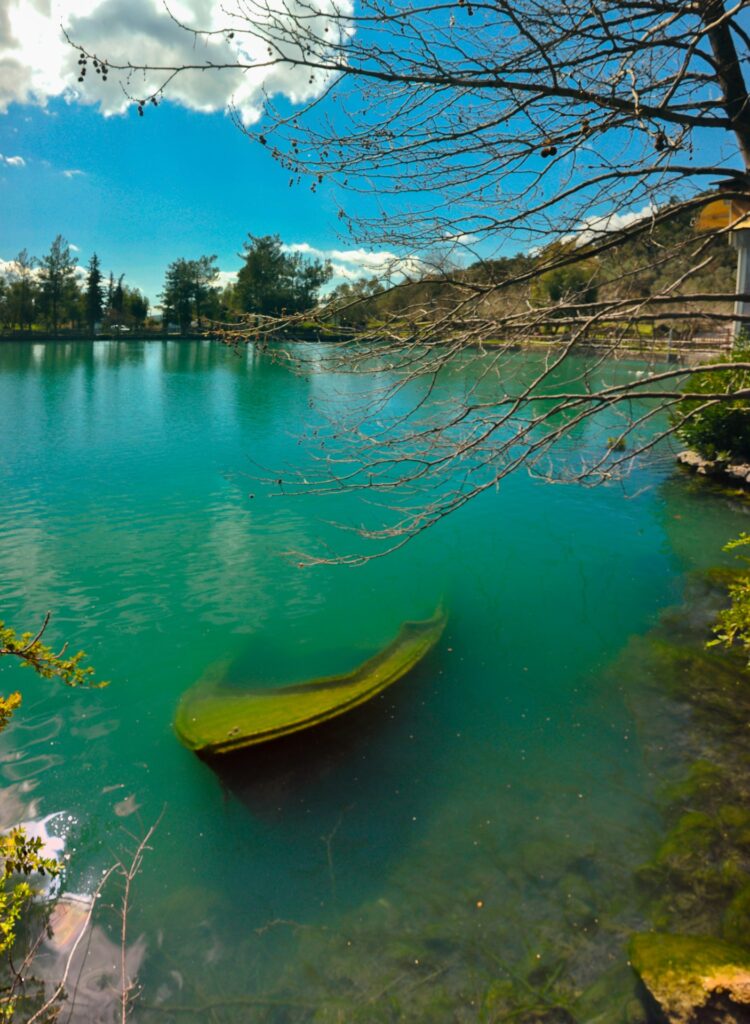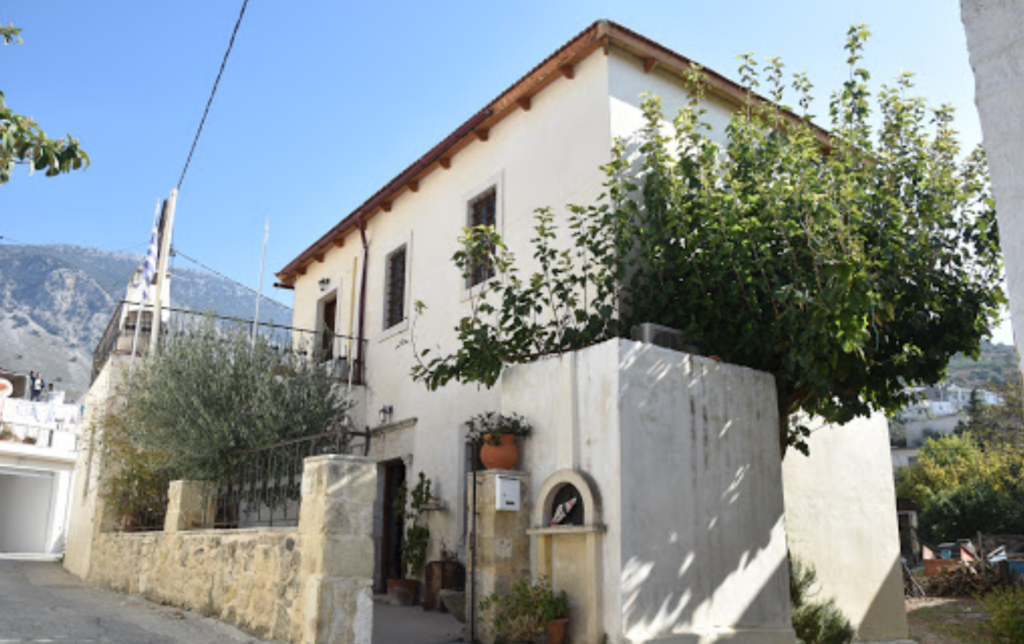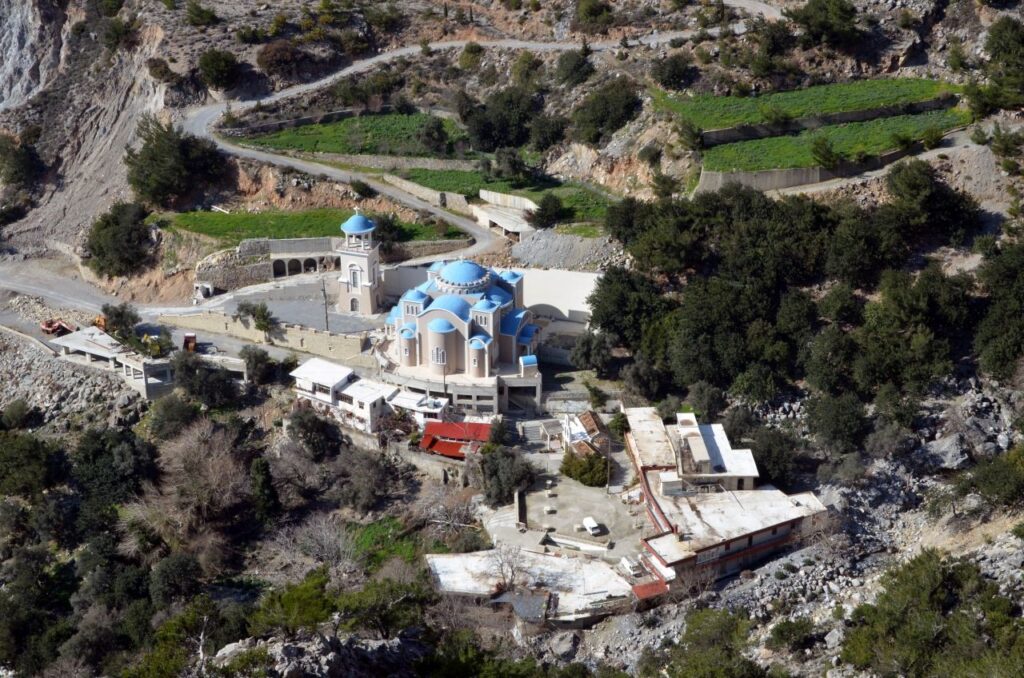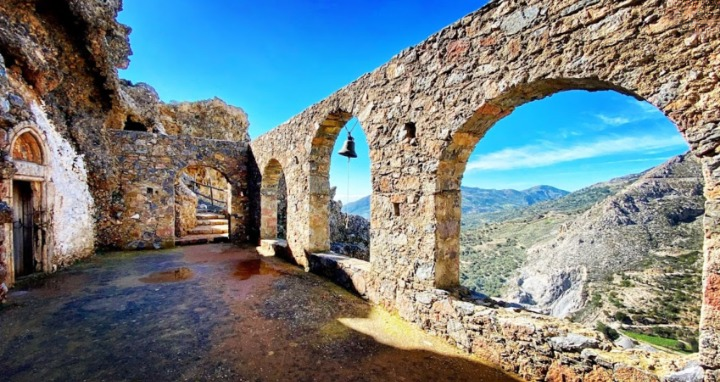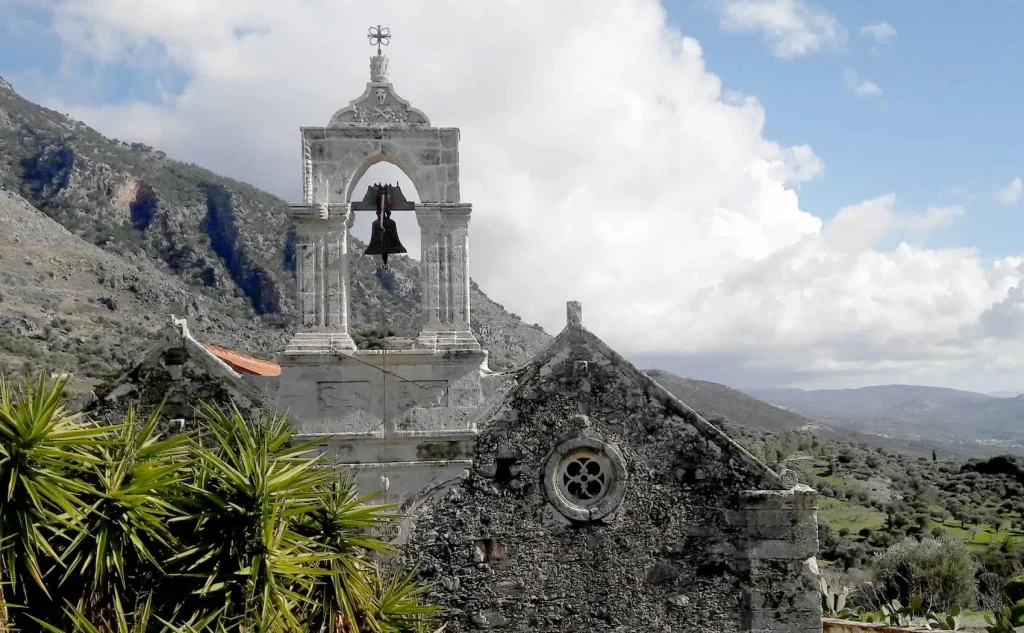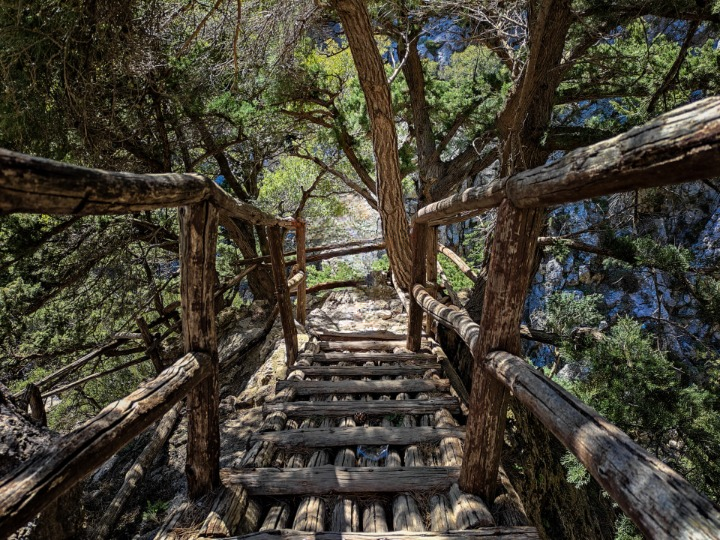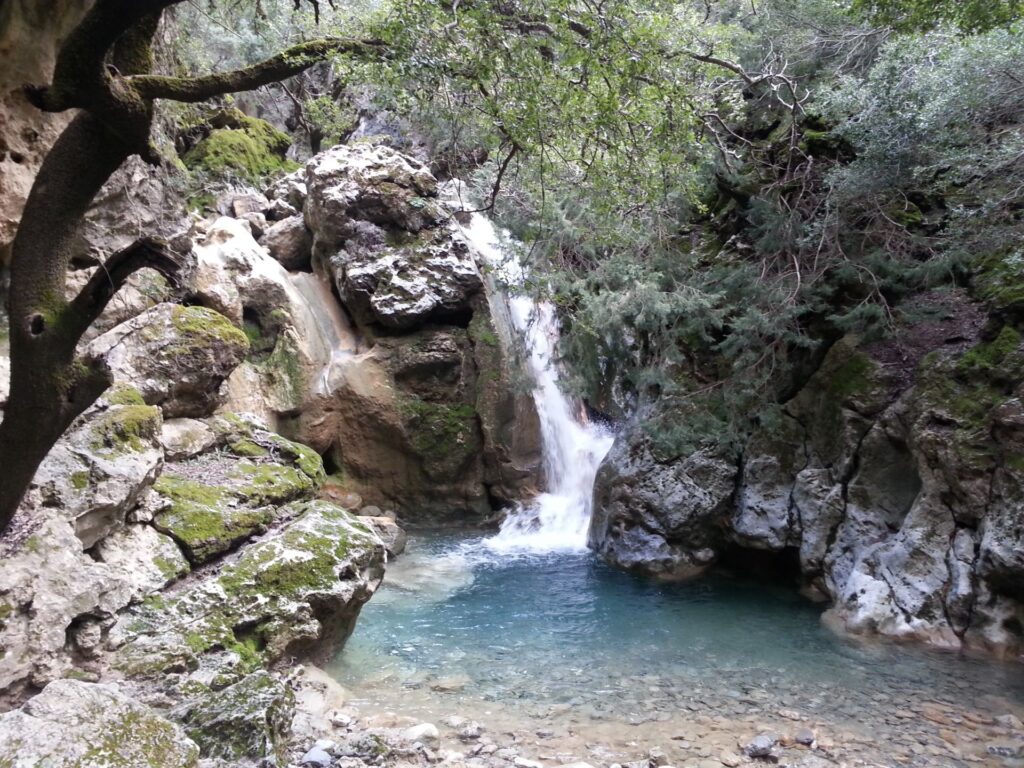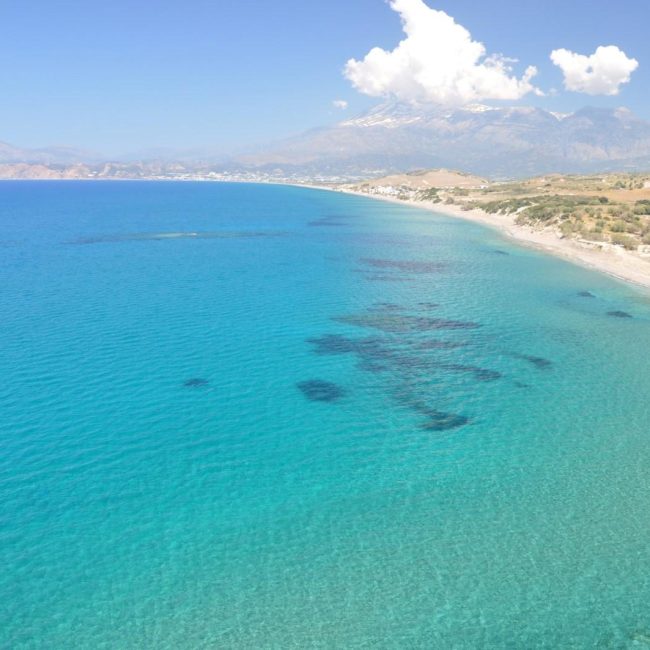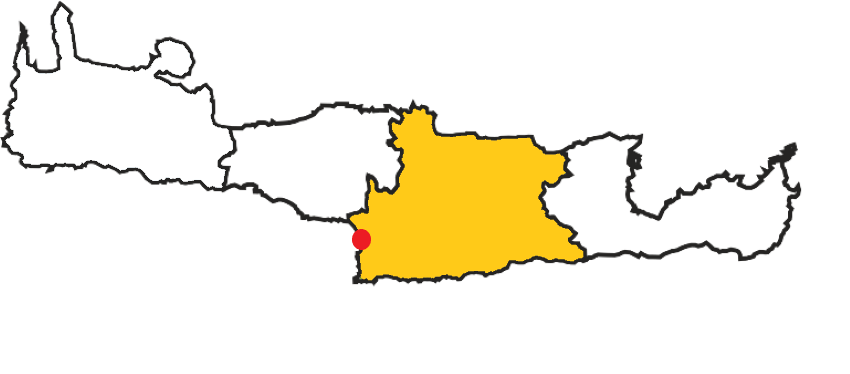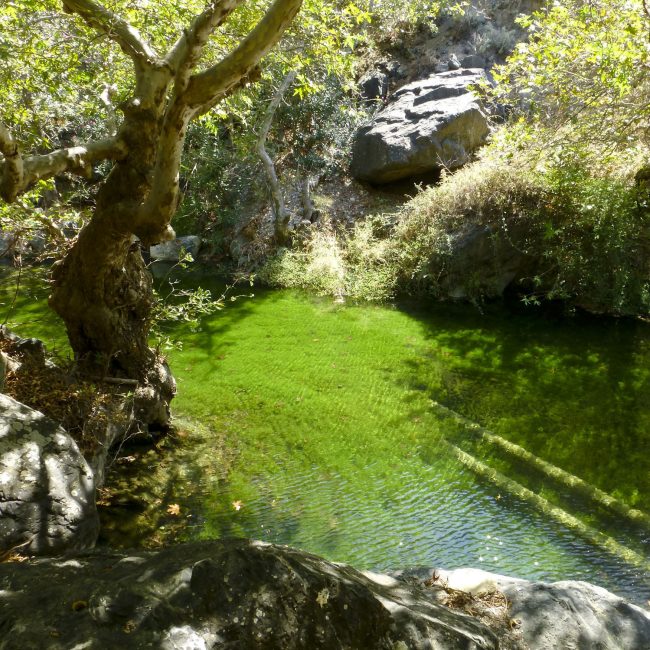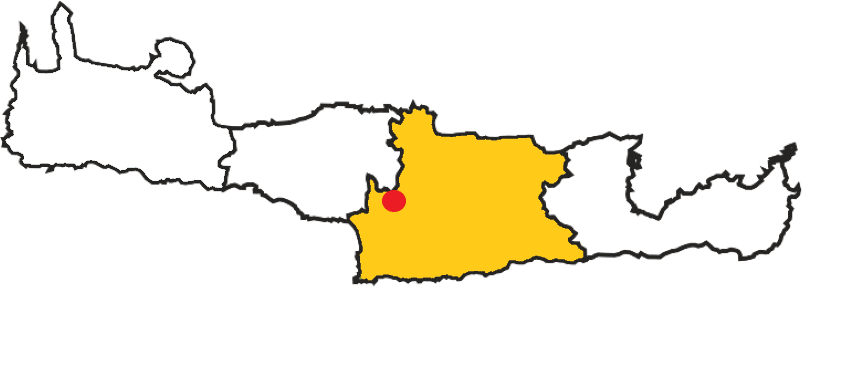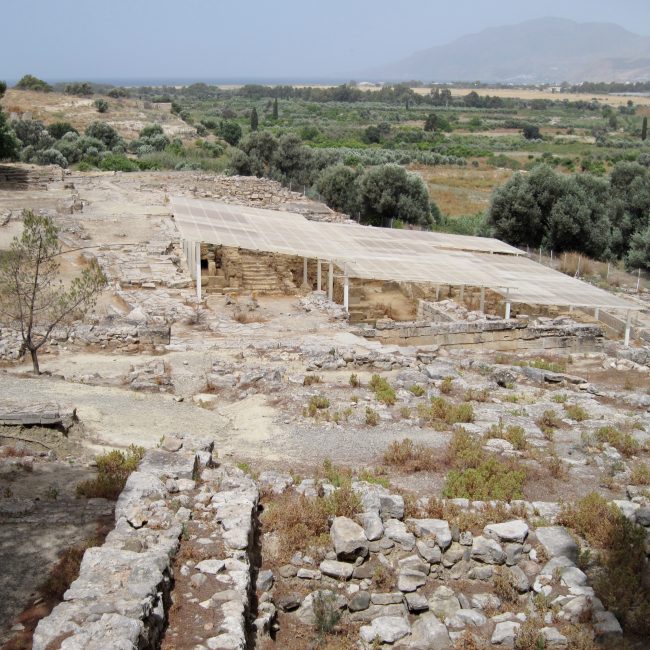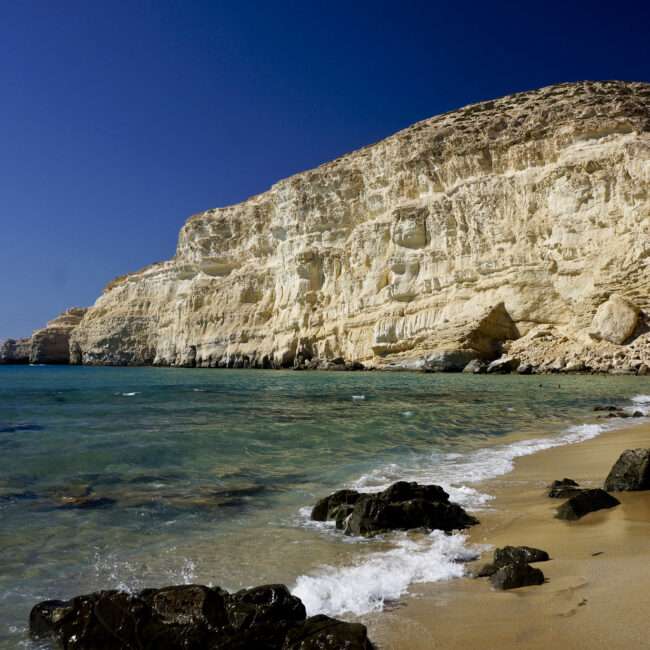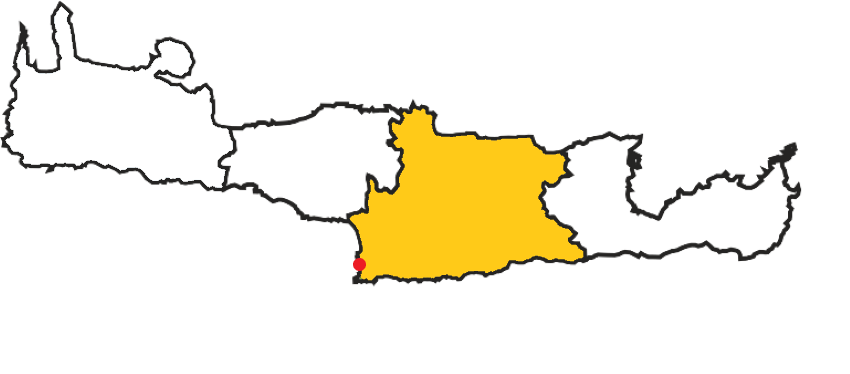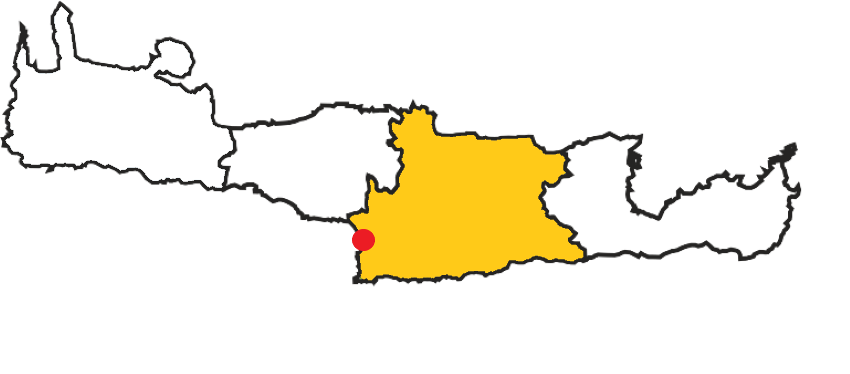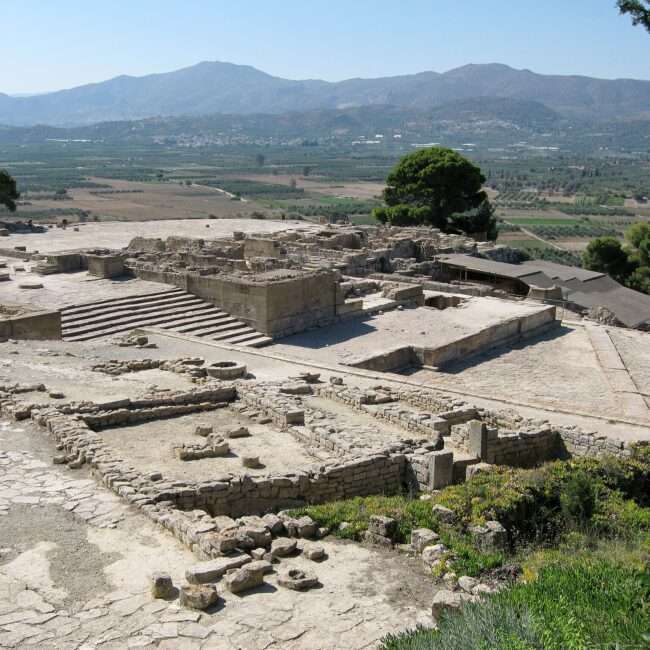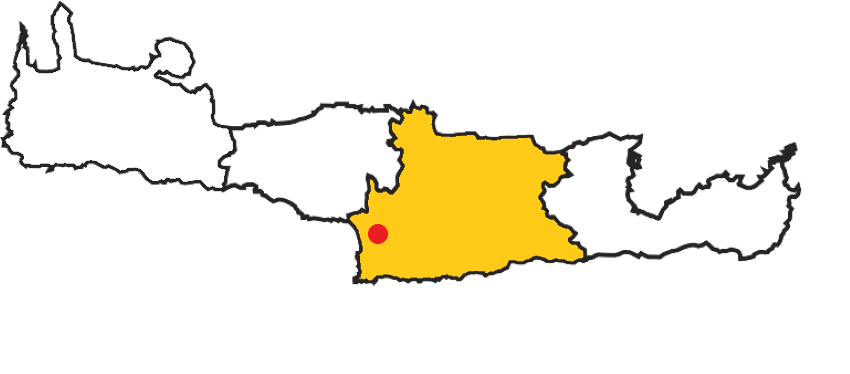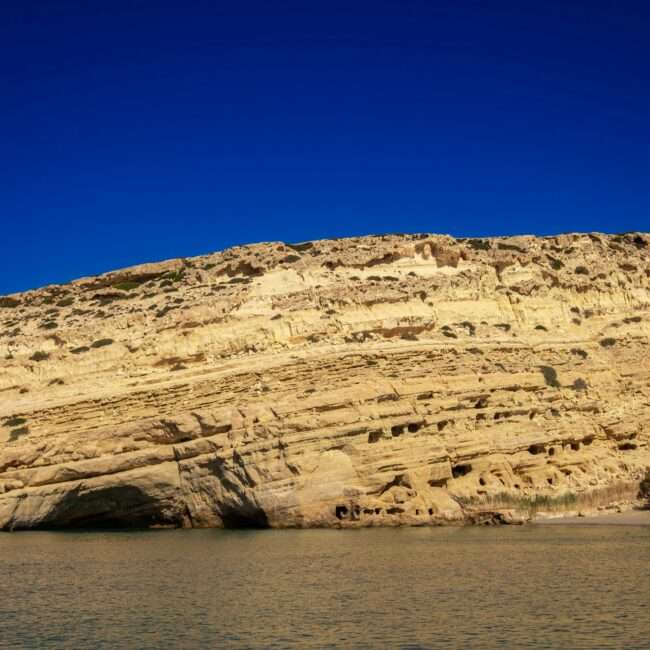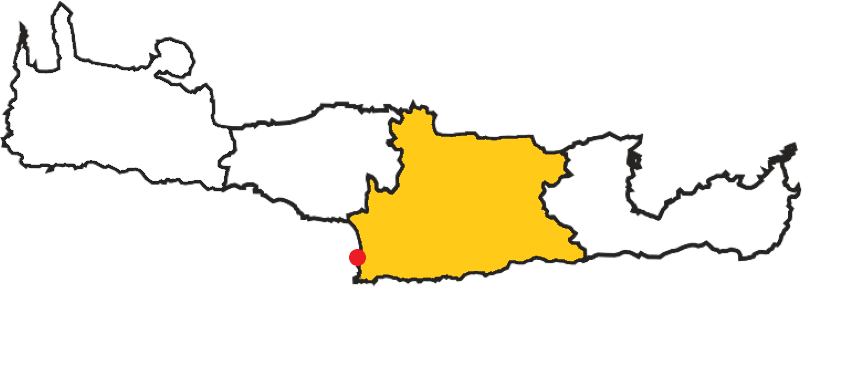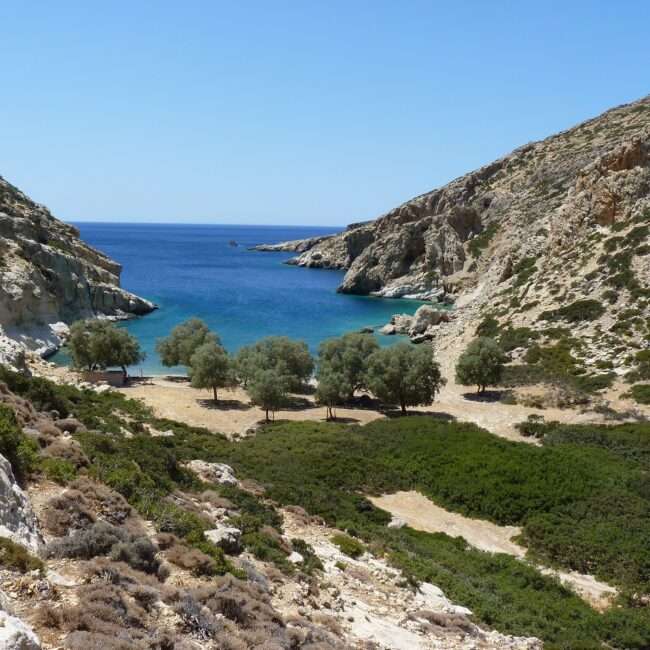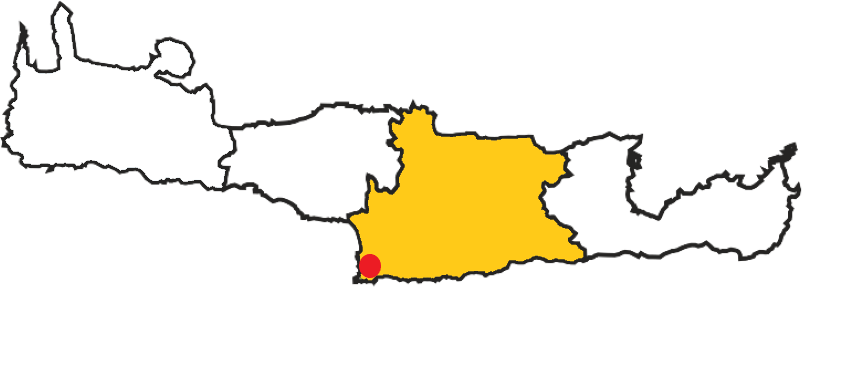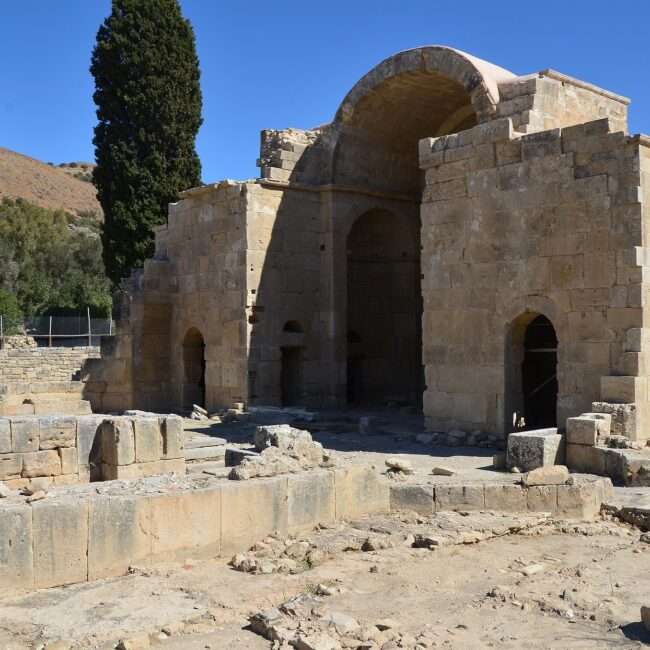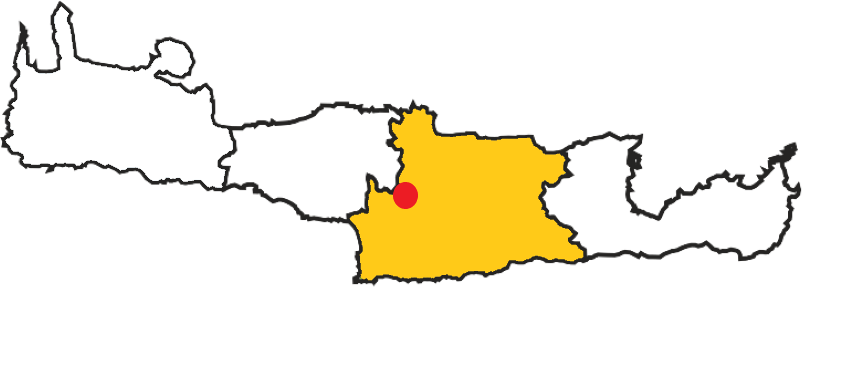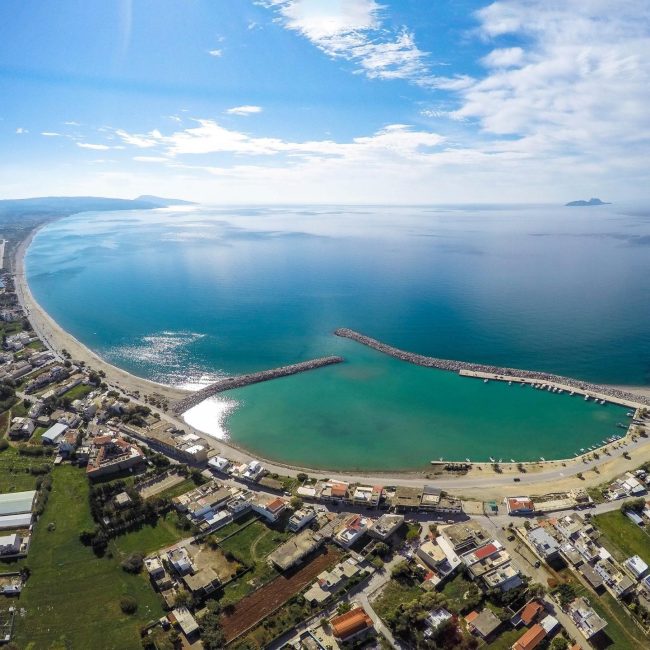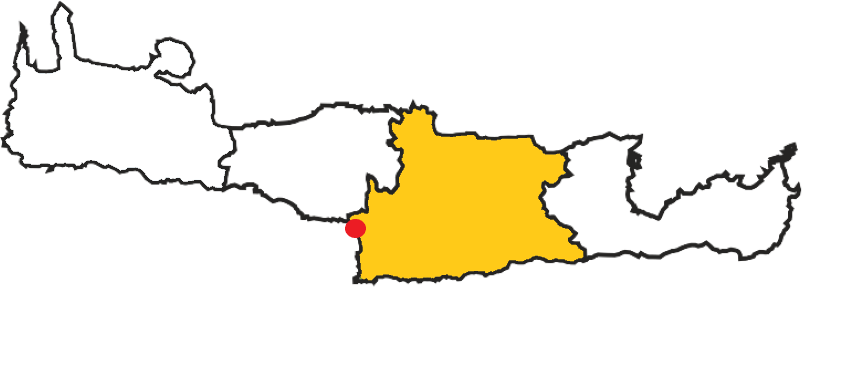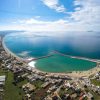Zaros Village & Lake
Zaros Village and Lake: A Natural Paradise in Crete
Zaros village and its tranquil lake are located in the heart of the Heraklion district. Just 48.4 kilometers from the city (50 minutes by car), they provide a pleasant getaway into the island’s pristine natural beauty. Visitors can immerse themselves in the Cretan countryside, experience traditional village life, and relax by a magnificent freshwater lake. Zaros is a hidden gem that blends stunning landscapes, cultural activities, and outdoor activity opportunities.
The Village of Zaros
Zaros is a small picturesque village of approximately 2000 inhabitants in the south slopes of mount Idi or Psiloritis.
It is a place endowed by nature with many springs with crystal clear water. The name of the village it comes from the ancient times and means “the place that much water flows”.
Because the fertile valley of Zaros has always been an attractive location for mankind, it has been populated since ancient times. A Minoan settlement has been discovered near Kourtes, and the ruins of Roman Gortyn’s huge aqueduct can be found in many locations. All these ancient settlements nearby had Zaros as their water supplier.
Water, an unending source of life, is a vital aspect of Zaros’ history, as seen by the many historic watermills in the village and the gorgeous Lake Votomos (Zaros lake).
Even today, however, water brings wealth in bulk to modern water bottling companies like “Zaros”, the operation of small trout farms, crops, and so on.
Zaros lake
As we mentioned above, the area around Zaros and it’s springs played a huge role in ancient times as a water reservoir for many nearby settlements.
The artificial lake of Zaros, also known as Votomos, is located on the southern slopes of Psiloritis, approximately 1km north of Zaros village.
Before 1987, the region was a small marsh formed by the crater of Votomos Spring. It took on its current appearance in 1987, when the Forest Service built an artificial lake to hold spring water.
There are various restaurants and cafes around the lake where guests can relax and sample trout and salmon raised in tanks around the lake.
The lake is also encircled by a playground, several chairs, and picnic tables. A walk around the lake is only a few minutes long.
Finally, the lake serves as the starting point for the E4 path that leads through the Rouvas Gorge to the spectacular Rouvas Wood, 5 kilometers north, which is approximately 2:30 hours of trail trekking.
nearby ATTRACTIONS
Folklore and geological museum
The Folklore and Geological Museum of Zaros is built in a traditional Cretan house and is located near the church of St. George in Zaros. The museum has been open since November 2014.
The folklore collection includes traditional Cretan everyday objects from the past. There are also samples of traditional Cretan clothes worn on human-like dolls among them.
The Geological Museum houses an impressive collection of over 350 different types of rocks from throughout the world. There are fossils of sharks, trees, and animals that lived millions of years ago among them.
The monastery of saint Nikolaos
The monastery of Agios Nikolaos (Saint Nicholas) is located at the entrance to the lovely gorge of Gafaris (or Rouvas).
It was constructed near the site where a large fire in 1994 destroyed most of the gorge’s spectacular pine forest. The monastery is located 20 minutes north of Lake Zaros on the path leading to the gorge.
The architecture is modern and stands out from the surrounding environment. Two attractions for visitors are the historic church of St. Nicholas, with Paleologean-style murals from the 14th century, and the rebuilt temple of Agia Paraskevi.
Saint Efthymios church
The area of Kalives, high above the monastery of Saint Nicholas on the eastern side of the Rouvas gorge, is where the Saints Euthymius and Nikolaos Kourtaliotis lived in the 17th century (about 1670). Some researchers believe that these are the same individuals. Inside the cavernous church, there are a few frescoes and a rock carving with the number 1432, but it is unlikely to be a date, considering dates at the time were written using Greek symbols.
According to legend, Saint Nicholas Kourtaliotis was killed by a hunter when the nuns of Saint Nikolaos monastery noticed him wandering around the gardens disguised as an animal. The injured saint requested that the hunter transport him to the current location of the little church of Saint Nicholas in the Kourtaliotis Gorge. Nikolaos mysteriously opened the current springs of Kourtaliotis to relieve the hunter’s thirst.
The Monastery of Vrontisi, also known as the Holy Monastery of Agios Antonios Vrontisiou, stands as a quiet refuge offering comfort and spiritual nutrition in the lovely surroundings of the Heraklion district of Crete.
Located at the southern feet of the sierra of Psiloritis, at a distance of around 2 kilometers from the settlement of Zaros.
The monastery attracts visitors seeking tranquility, cultural exploration, and a glimpse into Crete’s religious past due to its rich history, spiritual significance, and gorgeous surroundings. This article goes into the enthralling story of the Monastery of Vrontisi, revealing its historical roots, architectural beauty, and long-standing position as a spiritual retreat.
If we take the E4 path starting from the lake of Zaros, we shall arrive at the monastery of Saint Nicholas just before crossing to the gorge of Rouvas. An uphill trail leads from the monastery, first through the burned forest. The views of the Zaros and Messara planes are spectacular at times, especially from the location of Samari. The trail soon enters a small ravine where the foliage thickens and the slopes come closer together. Gafaris is the name of this section of the gorge. We then go along the river bed, which has a lot of water in the spring and forms various waterfalls and ponds. We’ll go via the lovely wooden bridge and continue through the verdant forest. The same old church may be found in St. John, and the area is great for picnics and resting. There is a mountain shelter, restrooms, chairs, and a spring to cool off in. Saint John is also accessible by car from Gergeri, and on weekends, it is overrun with residents who enjoy the outdoors. Unless you have someone to pick you up at St. John, you must journey back via the gorge.
THINGS TO SEE AND DO IN zaros
How to Get There
By car:
From Heraklion to Zaros village, it is 48.4 kilometers, or approximately 50 minutes.
Head southwest from Heraklion city center. You can use the local roads or take the New National Road (E75) southbound.
Continue on the New National Road (E75) and then take the exit to Moires.
Follow the Heraklion-Moires E97 for most of the trip until the exit for Gortyn-Kato Zaros. Take that exit and follow the signs to Zaros Village
Zaros is located at the foothills of Mount Psiloritis (Mount Ida), and you can’t miss the scenic beauty of the area and Zaros Lake as you approach the village.
By Bus:
The buses that can take you to Zaros village are the KTEL ones. You can catch them at the central station in Heraklion, but you should check the timetables for both go-and-return.
Conclusion
Zaros, with its tranquil ambiance, natural beauty, and traditional charm, is a captivating destination in Crete. Whether you seek relaxation, outdoor adventures, or an immersion into Cretan culture, Zaros has something to offer every traveler. Visit this serene village and experience the enchanting spirit of Crete that will leave you with lasting memories of your journey.
ADDITIONAL TIPS FOR AN ENJOYABLE VISIT TO Zaros
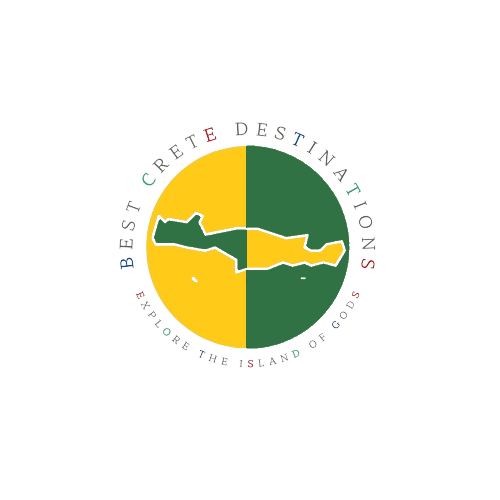
Destinations near Zaros
More options for nearby locations to plan your vacations better!


